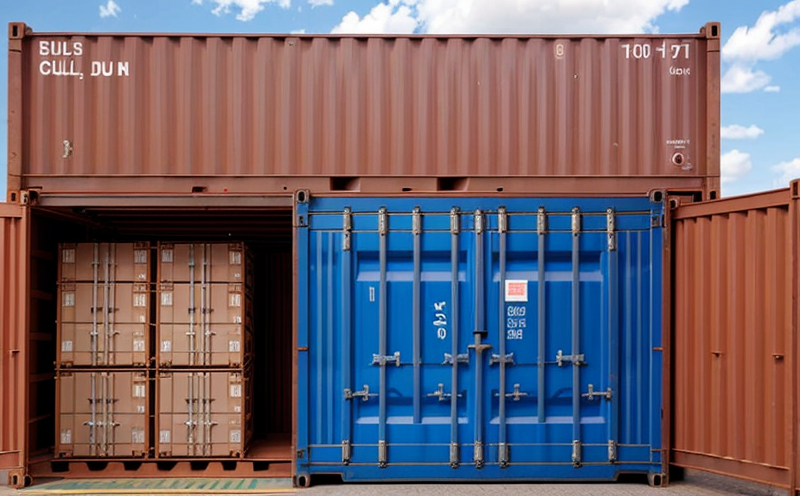USP Accelerated Aging Packaging Testing
The USP Accelerated Aging Packaging Testing service is a critical component in ensuring that pharmaceutical packaging meets stringent requirements set by regulatory bodies, particularly the United States Pharmacopeia (USP). This testing method simulates aging conditions to predict the performance of packaging materials under real-world storage and distribution scenarios. The primary objective is to confirm that the container closure system remains effective over time, maintaining product integrity and safety throughout its shelf life.
The USP 1207 Container Closure System chapter outlines the necessary tests for ensuring the effectiveness of packaging materials in protecting against contamination and degradation. Accelerated aging is a key component of this testing process as it allows quality managers, compliance officers, R&D engineers, and procurement teams to evaluate packaging performance under accelerated conditions that mimic years of real-world storage.
During USP accelerated aging tests, various factors such as temperature, humidity, and light exposure are carefully controlled. These parameters can be adjusted based on the specific requirements of the product and its intended market. For instance, a drug with a shorter shelf life might require more stringent testing conditions compared to one expected to have a longer shelf life.
The service involves several stages. Initially, packaging samples are prepared according to USP guidelines. This includes selecting appropriate containers that represent the final product packaging. The selected specimens undergo rigorous conditioning and aging in controlled environments designed to accelerate degradation processes. After exposure to these conditions, the integrity of the container closure system is evaluated through a series of tests outlined in the USP 1207 chapter.
Key acceptance criteria include checking for leaks, ensuring that seals remain intact, verifying the compatibility of materials with the product contents, and confirming that the packaging remains stable under specified conditions. Compliance officers must ensure that all testing aligns with relevant international standards such as USP General Chapter 1207, ISO 15394-2, ASTM F80e, and others.
The results of these tests provide critical data for pharmaceutical companies to make informed decisions regarding packaging modifications or approvals. For R&D engineers, this testing is invaluable in optimizing the design of container closure systems that can withstand harsh environmental conditions. Procurement teams benefit from this service as it ensures they are selecting suppliers whose products meet rigorous quality standards.
By leveraging USP accelerated aging packaging testing, companies not only comply with regulatory requirements but also enhance product safety and efficacy. This proactive approach helps to minimize risks associated with compromised container closure systems, thereby protecting consumer health and ensuring market compliance.
Industry Applications
- Pharmaceutical Products: Ensuring the stability of active pharmaceutical ingredients (APIs) within their packaging to prevent degradation.
- Vaccine Production: Evaluating vaccine integrity under accelerated aging conditions to ensure consistent potency and efficacy over time.
- Biopharmaceuticals: Testing biologics for long-term stability in various environmental conditions, ensuring product quality during extended storage periods.
- Ophthalmic Products: Guaranteeing the safety and effectiveness of eye drops under accelerated aging scenarios to maintain their therapeutic properties.
- Regulatory Compliance: Meeting FDA and other international regulatory body requirements for packaging integrity and stability.
- Risk Mitigation: Identifying potential issues in container closure systems before they lead to product recalls or market withdrawals.
- Product Development: Optimizing packaging design to enhance shelf life without compromising on safety or efficacy.
- Supplier Evaluation: Assessing the quality and reliability of packaging materials supplied by various vendors.
Customer Impact and Satisfaction
The USP accelerated aging packaging testing service directly impacts customer satisfaction in several ways. Firstly, it ensures that patients receive safe, effective medications without the risk of contamination or degradation due to compromised packaging. This is crucial for maintaining public trust and compliance with healthcare regulations.
For regulatory bodies, ensuring that pharmaceutical products meet stringent quality standards through accelerated aging testing helps safeguard public health. By reducing the likelihood of product failures, these tests contribute to a more reliable supply chain, enhancing overall customer satisfaction.
R&D teams benefit from this service by gaining insights into how packaging materials behave under various environmental conditions. This knowledge enables them to develop innovative solutions that not only meet regulatory requirements but also enhance product performance and shelf life.
Compliance officers find value in the detailed reports generated from accelerated aging tests, which provide a clear picture of packaging integrity and stability over time. These reports are essential for maintaining compliance with international standards like USP 1207 and ISO 15394-2, thereby ensuring that products meet strict quality benchmarks.
Lastly, procurement teams gain confidence in the reliability of their suppliers when they see consistent results from accelerated aging tests. This reduces the risk of receiving substandard materials and ensures a smooth supply chain, enhancing overall customer satisfaction.
Environmental and Sustainability Contributions
The USP Accelerated Aging Packaging Testing service plays an important role in environmental sustainability by promoting the use of more durable and eco-friendly packaging materials. By identifying materials that can withstand harsh storage conditions, this testing helps pharmaceutical companies reduce waste associated with compromised or expired products.
Through rigorous testing, companies can ensure that their packaging meets both current regulatory requirements and future sustainability goals. This proactive approach not only minimizes the environmental impact of product recalls but also promotes responsible sourcing practices by encouraging suppliers to use sustainable materials.
The service encourages innovation in container closure systems, leading to more efficient designs that are less likely to fail over time. By reducing material waste and extending product shelf life, pharmaceutical companies can contribute significantly to sustainability efforts. Additionally, the testing process itself is optimized for energy efficiency, further supporting environmental goals.





